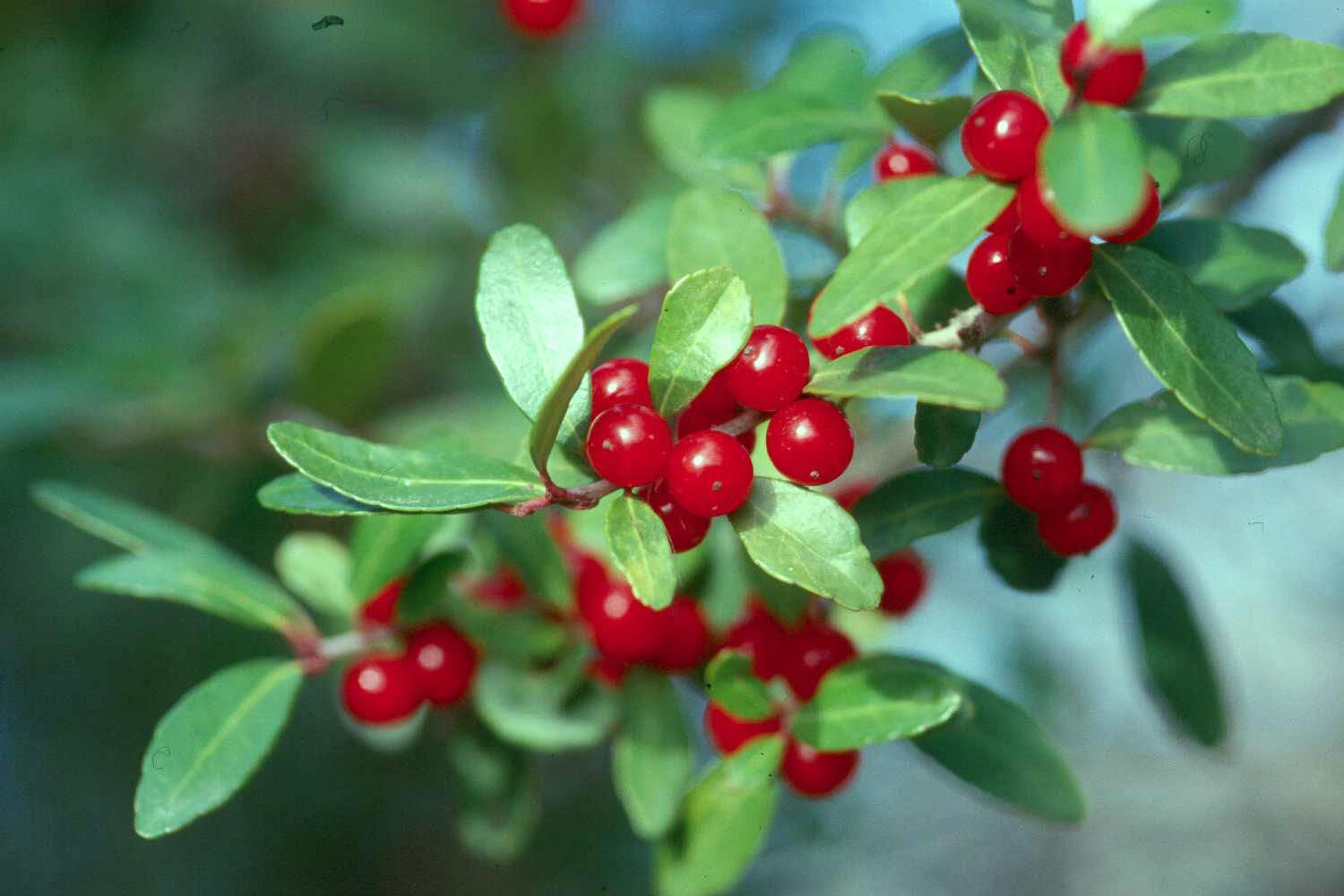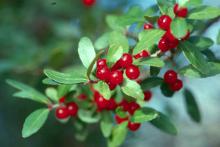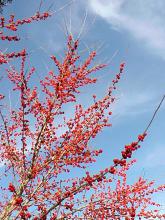Information Possibly Outdated
The information presented on this page was originally released on January 20, 2003. It may not be outdated, but please search our site for more current information. If you plan to quote or reference this information in a publication, please check with the Extension specialist or author before proceeding.
Native hollies excel in most landscapes
By Norman Winter
MSU Horticulturist
Central Mississippi Research & Extension Center
Farmers want to get rid of them and landscapers want to plant them, but two native hollies are at the top of my list of best shrubs or small trees we can grow in Mississippi.
Yaupon hollies are native throughout the Southeast. They are great shrubs for sunny beds and yet look good in shade. They tolerate clays, sand and everything in between.
Those of you who cringe at the mention of hollies because of thorny leaves can rest assured that the yaupon will cause you no harm.
This holly is like many others in that there are male and female plants. If you want the bright red, Christmas-type hollies for decorating, then you need female plants. A check at your favorite nursery right now will probably show an abundance of berries on the female plants. You may want to plant about one male plant for every 20 females. You don't have to plant them immediately adjacent to the females.
If you want even more berries, then ask your nursery owner to get selections like Jewel, Pride of Houston, Ochra Coke or the Mississippi Medallion award winning Kathy Ann. These are like the Olympic champions of berry producing. There are also weeping yaupons and yellow fruited varieties.
Dwarf varieties have become landscape standards. Look for varieties like Nana, Schellings, Stokes and Bordeaux with its crimson leaves on the new growth.
The other holly that is an award winner in my book is the possum haw. It gives us some of our best winter color by being literally covered with berries. The possum haw holly definitely falls into the category of being the most admired in the field and overlooked at the nursery.
If this native to Mississippi always catches your eye during the winter months and everyone likes it, why do we pass it by? Its botanical name might give a clue. It is known as Ilex decidua or deciduous holly as it loses its leaves. But the branches hold a bounty of bright red to orange berries that stay around all winter providing color and providing food for the birds.
Possum haws are easy to grow, and nurseries have them, so let's get after it. Choose female plants to assure berry production. Superior cultivars are Warren's Red, Pocahontas and Sentry. The berries on these are suggested to be either more prolific or larger than the native in the woods variety.
Regardless of the one you choose, plant in sun to partial sun and in the same places you might plant a crape myrtle. Use them to frame entryways for special accents or along driveways and around the patio. Anywhere the landscape looks drab in the winter is a great place for the possum haw holly to brighten.
It has few pests. One well-known horticulturist said you could garden for 12 lifetimes and never see an insect or disease bothering the plant. In some years we may have our berries stripped by a waxwing, bobwhite quail or one of seven other species, but those are the kinds of invaders we are happy to see. As the name suggests, possums do find the berries a treat as well.
These native hollies do not like to dry out. They are at home in moist areas. If you have an abundance of berries, they can be lost if plants dry out. Fertilize your hollies in April and August.
This winter and spring when you are at your garden center choosing new trees or shrubs, the possum haw and yaupon hollies are two of the finest. Don't overlook them.









